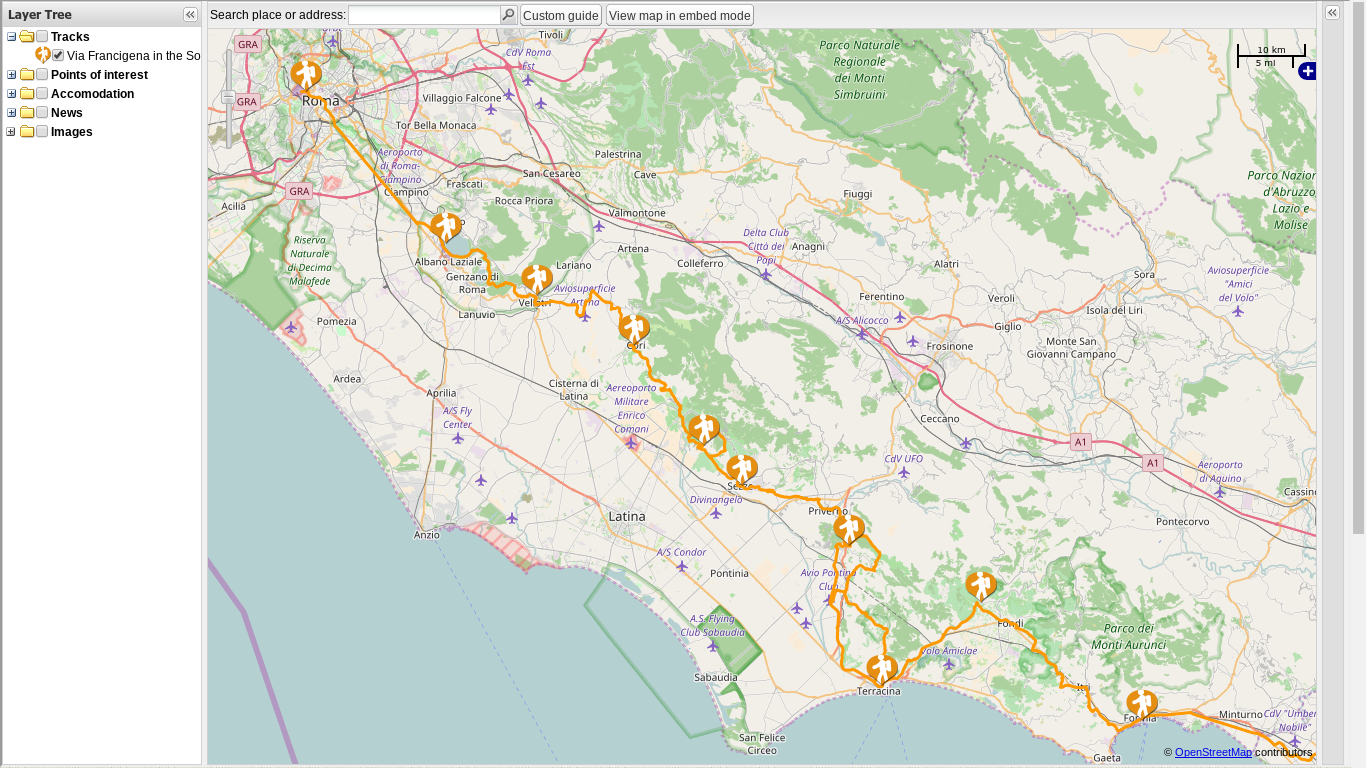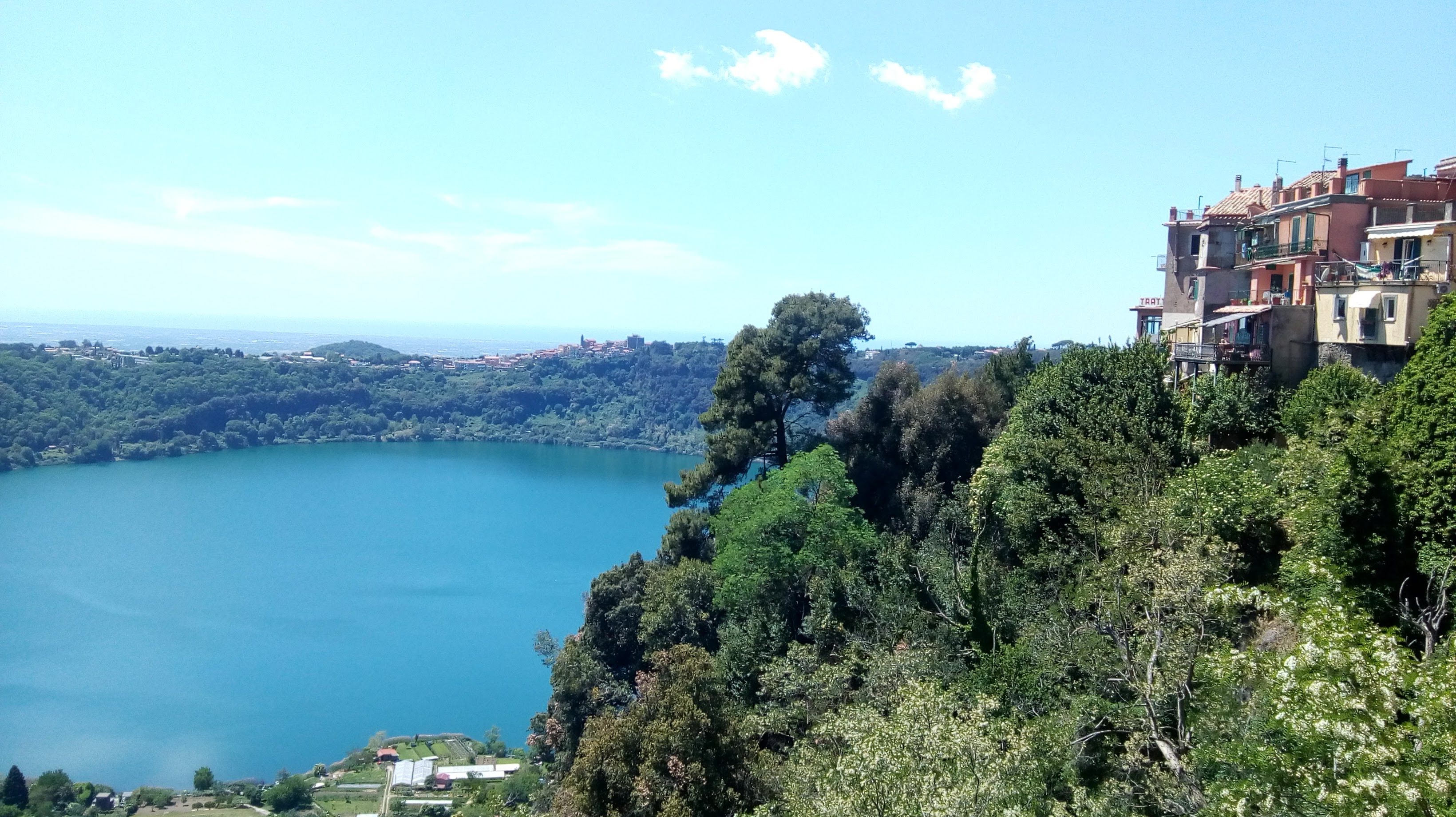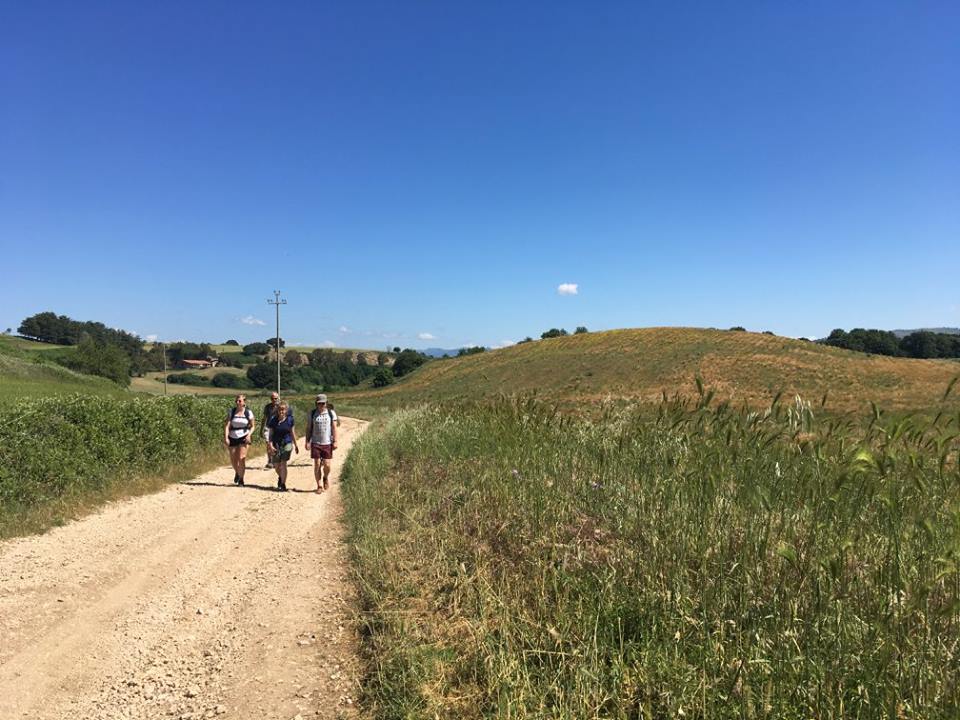Promoting the Heritage of Southern Lazio On The Via Francigena Del Sud by Elle Arscott
With Rome taking centre stage, it’s not surprising that the region of Lazio often gets overlooked by tourists. The drained areas of the Pontine Marshes are now mile after mile of agricultural land and industrial complexes, whilst the towns and cities dotting the plain are uninspiring compared to the nearby grandeur of the capital. The coastal region is popular with daytrippers from the city looking to enjoy the clean waters and golden sands of the Tyrrhenian Sea, but few venture further inland.

The secret landscape of Lazio. Photo credits: author’s own.
However, on Sunday 14th May, a group of University of Kent students collected at the eastern end of the Circus Maximus in Rome. The goal: to walk 87 miles of the Via Francigena Del Sud, from Rome to Terracina, straight through the rural heartland of southern Lazio. The Via Francigena Del Sud is a 434 mile pilgrimage from Rome to Brindisi, with Jerusalem the ultimate destination. It is the natural successor to its more famous cousin the Via Francigena, the pilgrim path from Canterbury to Rome. The section we were going to tackle from Rome to Terracina was only a small part of a much longer heritage route, steeped in history both ancient and modern. In Roman times, troops and civilians could have covered vast distances on the Via Appia, the strategic road connecting Rome on the west coast to Brindisi in the east. The Appian Way cut straight across the Pontine Marshes, the Romans being undeterred by stagnant waters or mosquitoes and confident in their complete domination of this flat, exposed stretch of land. By the medieval period, however, the region had broken up into small, often warring, factions and Christian pilgrims on their way to Jerusalem may have diverted their route further inland, seeking shelter in the towns of the Lepini Mountains on their way to Terracina instead.

Nowadays, the Via Francigena Del Sud is an officially recognised, waymarked route – at least in theory. Whilst the first three days of our walk, from Rome to Cori, were fairly straightforward and clearly signposted, the further we trekked into the hills and mountains the less clear the path became. All too often the route itinerary directed us to walk alongside busy roads or hack through overgrown hedgerows with no sign of a path.

The “path” between Nemi and Velletri. Photo credits: Julia Peters.
Unfortunately, these inconsistencies mean that the Via Francigena Del Sud is, in its present state, a limited tool for tourism development in the southern Lazio region. Greater attention needs to be given to waymarking (in both directions) whilst the suggested itinerary could be refined in order to better spread the distances covered and take advantage of staying longer in the more historic towns along the route and visiting local archaeological sites and museums.

The historic village of Nemi, perched above its eponymous lake. Photo credits: author’s own.
However, with these small issues ironed out the Via Francigena Del Sud has great potential to attract new visitors to the area, particularly repeat visitors to Rome who may with to divide their city trip with a rural escape. The rich history of the area has to be seen to be believed, whilst the amazing hospitality of all our hosts, the friendliness of local people, the fresh produce and excellent wine are all added bonuses to what is still an unspoilt and beautiful region.

Walking near Giulianello. Photo Credits: Julia Peters.
The 6 students walking the Via Francigena Del Sud were funded by the Kent Opportunity Fund, the European Centres and the School of English. See http://blogs.kent.ac.uk/linking-heritage/italy-walk/ for more information. Visit http://www.viefrancigenedelsud.it/en/ for more information on the official route.
“E. A. has an MA in heritage management, and has an undergraduate degree in History of Art & Music from the University of Edinburgh. She is interested in international arts and antiquities law, as well as heritage marketing and alternative approaches to heritage site management.”
